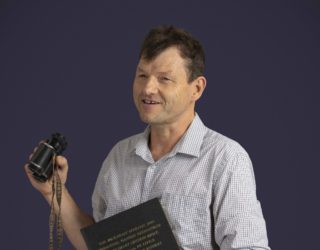What’s ‘a day in the life of’ like for an Assistant Ecologist at Thomson, operating out of our Birmingham office? Byron takes us through a late night and early morning while surveying for great crested newts.
10:00
A slightly later start than normal as I know that I will be up quite late this evening. The morning involves doing some admin as well as brushing up on some of my ID skills for the protected species that I am likely to come across on my survey later, namely the great crested newts ensuring that if I come across any, I will be able to correctly identify that species as well as gender and life stage.
12:00
I have lunch, and then spend the afternoon ensuring I’m prepared for my survey, making sure I know the location of my survey site, liaising with the surveyors I will be working with, as well as being prepared with all the equipment and PPE that I’ll need. Afterwards, I have some down time to relax before heading out to undertake the evening’s work.
17:00
It’s around a half hour drive to the site in Nottinghamshire. Upon arrival, I meet up with my fellow ecologists Jordanne, Rachel and Laurie. The site is a nature reserve, with a few small ponds which have some promising potential for great crested newts. Our first task is to find out just how good the habitat here is for this protected species.
This involves undertaking a Habitat Suitability Index assessment for great crested newts. For this, we look at parameters of a pond such as its size, water quality, geographical location, whether other species such as waterfowl, fish and invertebrates are present and what vegetation is present, along with a few others.
19:00
Now it’s time to begin the actual survey. We carry out the survey after sunset, as it is at night-time when great crested newts are most active.To maximise the chances of finding newts, three different survey techniques must be carried out. On this occasion, we undertake torching (using a powerful torch to illuminate the pond, in the hope of spotting the newts), egg searching (great crested newts like to lay their individual eggs on vegetation around the pond) and bottle trapping.
We deploy the bottle traps around the ponds. These traps are constructed out of plastic bottles and wooden canes, which we reuse for other surveys, to ensure sustainability, with the aim of safely containing any newts that crawl inside, until we return to release them the following morning. These methods were chosen for the survey as they yield the best results for determining the presence of great crested newts. They are also less harmful for the ecology of the pond, techniques such as netting (sweeping nets across the pond floor and observing what species are caught) are more invasive and create a lot of disturbance, so are generally only used when the other methods are not feasible.
22:30
With the survey finished for the night, it’s time to head home and sleep.
06:30
An earlier start than yesterday, it’s time to go back to site and collect the bottle traps. Getting to site earlier in the morning ensures that the newts are safely released before the sun gets too hot.
All the bottle traps are collected and any great crested newts (or any other creatures that may have made their way into the traps) are recorded and released back into the pond.
This data that we have recorded, along with any photo evidence and any health and safety issues we came across while on site, will have to be submitted to the client, with health and safety issues reported immediately to our HSQE Manager. Once back in the office any equipment we have used will also need to be cleaned and checked over for any damage, making life easier for the next surveyor who takes them out on a survey.
With the survey complete, I head home and get some rest (and maybe a little bit more sleep) before continuing with another exciting and varied day as an ecologist.
How we can help you
Our teams of environmental specialists handle projects of all shapes and sizes across the UK, helping clients achieve environmental compliance in a cost effective, pragmatic way. Our can-do approach, coupled with an in-depth knowledge of a range of environmental matters, means we can support you from the beginning to the end of your project with maximum efficiency.
Get in touch today to book in your ecological surveys for the season ahead.
Contact us
Why not check out our latest news for more information.











